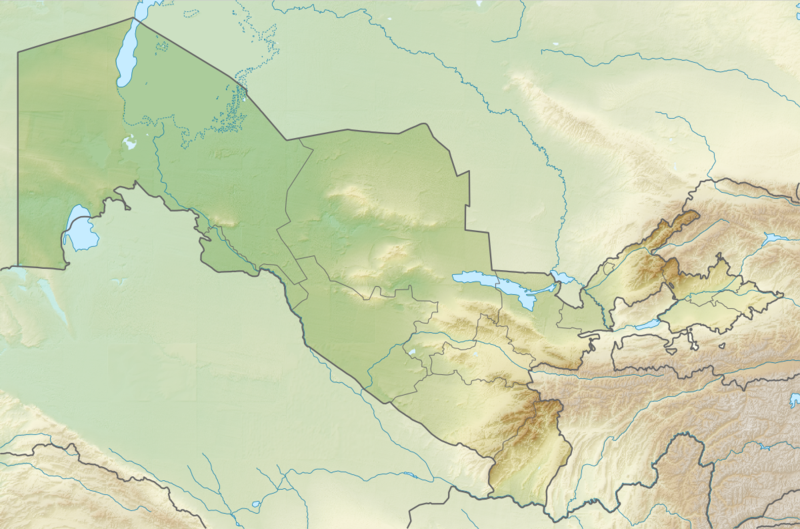
For more information, click here. Or, Try these sources:
- Michelle Glantz, Bence Viola, Patrick Wrinn, Tatiana Chikisheva, Anatoly Derevianko, Andrei Krivoshapkin, Uktur Islamov, Rustam Suleimanov, Terrence Ritzman, New hominin remains from Uzbekistan. Journal of Human Evolution 55 (2008) 223–237. doi:10.1016/j.jhevol.2007.12.007.
In 2003, hominin remains were recovered from stratum 16. They consist of 6 isolated permanent maxillary teeth and 121 cranial fragments from a single subadult (juvenile). The Obi-Rakhmat fossil expresses a relatively Neandertal-like dentition coupled with more ambiguous cranial anatomy (e.g., its parietal size and aspects of the external surface of its temporal) that does not conform to existing descriptions of subadult Neandertals. It represents an individual of roughly 9–12 years of age at death, estimated from the examination of relative root development and degree of dental wear. The subadult bone yielded uncalibrated dates ranging from 29,990 ± 500 years BP to 37,800 ± 450 years BP. To date, the best chronological estimate for the hominid remains from Obi-Rakhmat is ca. 60–90 ka BP or ~70 ka.
- Andrei I Krivoshapkin, Yaroslav V Kuzmin, A J Timothy Jull, Chronology of the Obi-Rakhmat Grotto (Uzbekistan): First Results on the Dating and Problems of the Paleolithic Key Site in Central Asia. Proceedings of the 20th International Radiocarbon Conference, edited by A J T Jull. RADIOCARBON, Vol 52, Nr 2–3, 2010, p 549–554. p 553].